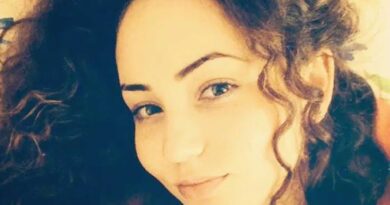History of Buffalo Wild Wings Founded in Columbus Ohio
Buffalo Wild Wings, often affectionately referred to as “B-Dubs” by its loyal patrons, is a brand synonymous with sports, wings, and beer. What started as a small venture in Columbus, Ohio, has grown into one of the largest and most popular casual dining chains in the United States. This article delves into the fascinating history of Buffalo Wild Wings, tracing its journey from a single restaurant to an international phenomenon.
The Birth of an Idea: How Buffalo Wild Wings Began
The story of Buffalo Wild Wings begins in the early 1980s, with two friends, Jim Disbrow and Scott Lowery. Disbrow, originally from Buffalo, New York, had moved to Ohio and soon found himself craving the spicy, tangy chicken wings that were a staple in his hometown. Unable to find a restaurant in Columbus that served authentic Buffalo-style wings, Disbrow and Lowery decided to take matters into their own hands.
In 1982, the duo opened their first restaurant near The Ohio State University campus in Columbus. They named it “Buffalo Wild Wings & Weck,” a nod to both the wings and the “weck” in “beef on weck,” a popular sandwich in Buffalo, New York, served on a kummelweck roll. The restaurant’s original menu featured a simple selection of wings, sauces, and sandwiches, but it was the wings that quickly became the star attraction.
Early Growth and Expansion
The success of the original Buffalo Wild Wings & Weck restaurant was immediate, driven by word of mouth and the popularity of the wings among college students and locals. Encouraged by this success, Disbrow and Lowery began to explore opportunities for expansion. In 1983, they opened their second location in Westerville, Ohio, which further solidified the brand’s presence in the Columbus area.
As the demand for Buffalo Wild Wings grew, the founders realized that they needed to streamline operations and create a replicable business model if they were to expand further. They began to refine their menu, focusing more on the wings and sauces that had become their trademark, while also creating a sports-centric atmosphere that would appeal to a broader audience.
Franchise Model and National Expansion
In 1991, Buffalo Wild Wings & Weck took a significant step towards becoming a national brand by beginning to franchise its operations. The decision to franchise was pivotal, allowing the company to rapidly expand its footprint beyond Ohio. The name was shortened to “Buffalo Wild Wings” to make it more marketable, though some locations and longtime fans still refer to the original “BW3” moniker, representing the original name’s three W’s.
Franchising proved to be a successful strategy, and throughout the 1990s, Buffalo Wild Wings expanded across the Midwest and into other regions of the United States. The chain’s growth was driven not only by its unique offering of Buffalo-style wings but also by its innovative approach to the sports bar concept. Each Buffalo Wild Wings location featured multiple large-screen televisions, broadcasting sports events, which made it a popular destination for sports fans looking to enjoy a game with friends while indulging in wings and beer.
Evolution of the Menu and Brand Identity
As Buffalo Wild Wings expanded, so did its menu. While wings remained the core offering, the chain began to introduce new items such as burgers, sandwiches, and salads to appeal to a wider audience. However, it was the variety of sauces that truly set Buffalo Wild Wings apart from its competitors. The brand developed a signature lineup of sauces, ranging from mild to extremely hot, which allowed customers to customize their wing experience.
In addition to expanding its menu, Buffalo Wild Wings also evolved its brand identity. The sports bar atmosphere became more prominent, with an emphasis on creating a lively, social environment. The chain began to promote itself as “Wings. Beer. Sports.,” a slogan that encapsulated its core offerings and appealed to its target demographic of sports enthusiasts and young adults.
Going Public and Rapid Expansion
The early 2000s marked a period of rapid expansion for Buffalo Wild Wings, culminating in its initial public offering (IPO) in 2003. Going public provided the company with the capital needed to accelerate its growth, and it soon became one of the fastest-growing restaurant chains in the United States. By the mid-2000s, Buffalo Wild Wings had established a national presence, with hundreds of locations across the country.
This period also saw the brand expanding beyond traditional restaurant locations, opening Buffalo Wild Wings Grill & Bar venues in airports and sports arenas. These new locations helped to further solidify Buffalo Wild Wings as a go-to destination for sports fans and travelers alike.
The Impact of Sports and Community Engagement
One of the key factors behind Buffalo Wild Wings’ success has been its strong association with sports. From the beginning, the brand positioned itself as a sports bar where fans could gather to watch games and enjoy good food. This association was further reinforced through strategic partnerships and sponsorships with major sports leagues and events.
Buffalo Wild Wings became a sponsor of events like March Madness and the NFL, positioning itself as the ultimate destination for sports viewing. The brand also engaged with local communities by sponsoring youth sports teams and organizing viewing parties for local and regional games. This community engagement helped to build brand loyalty and make Buffalo Wild Wings a beloved part of many communities.
Challenges and Adaptations in the 21st Century
As Buffalo Wild Wings continued to grow, it faced new challenges, particularly as the casual dining industry became more competitive. The rise of fast-casual dining and changing consumer preferences forced the brand to adapt. Buffalo Wild Wings began to focus on improving the quality of its food, updating its restaurants, and enhancing the customer experience.
In 2017, Buffalo Wild Wings was acquired by Arby’s parent company, Inspire Brands, in a deal valued at approximately $2.9 billion. The acquisition marked a new chapter for the brand, as Inspire Brands aimed to leverage its portfolio of restaurant chains to drive growth and innovation across its holdings. Under new ownership, Buffalo Wild Wings has continued to evolve, introducing new menu items, revamping its locations, and exploring new business models, such as delivery and takeout, to stay competitive in the changing restaurant landscape.
The Global Expansion and International Presence
In addition to its domestic success, Buffalo Wild Wings has also pursued international expansion. The brand has opened locations in countries such as Canada, Mexico, the Philippines, Saudi Arabia, and India. While the international market presents unique challenges, such as adapting the menu to local tastes, Buffalo Wild Wings has managed to establish a presence in key markets by maintaining its core identity of sports, wings, and beer.
The international expansion of Buffalo Wild Wings highlights the brand’s global appeal and its potential to resonate with sports fans and wing lovers around the world. The chain’s ability to adapt to different cultural preferences while maintaining its signature offerings has been crucial to its success in international markets.
The Legacy of Buffalo Wild Wings
Buffalo Wild Wings’ journey from a single restaurant in Columbus, Ohio, to a global brand is a testament to the power of a simple idea executed with passion and vision. What began as a solution to a craving for Buffalo wings has evolved into a cultural phenomenon that has left an indelible mark on the American dining landscape.
The legacy of Buffalo Wild Wings lies not only in its growth and success but also in its influence on the casual dining industry. The brand’s innovative approach to creating a sports-centric dining experience has inspired countless imitators and set a new standard for what a sports bar can be. As Buffalo Wild Wings continues to evolve and expand, its place in the annals of American dining history is assured.
Looking Ahead: The Future of Buffalo Wild Wings
As Buffalo Wild Wings looks to the future, the brand remains focused on innovation and growth. Inspire Brands’ ownership has provided the company with the resources and strategic direction needed to navigate the challenges of the modern restaurant industry. With a continued emphasis on quality, customer experience, and community engagement, Buffalo Wild Wings is well-positioned to maintain its status as a leader in the casual dining space.
In the coming years, Buffalo Wild Wings is likely to continue expanding its global footprint, exploring new markets, and adapting to changing consumer preferences. Whether through new menu offerings, technological innovations, or enhanced dining experiences, the brand’s commitment to its core values of wings, beer, and sports will undoubtedly guide its journey forward.
Discover more from City Towner
Subscribe to get the latest posts sent to your email.




